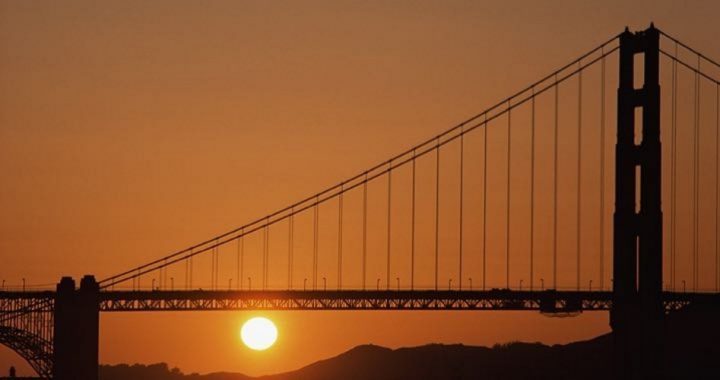
“The current state of California has become governed by a tyranny,” declares a group known as “New California,” in announcing on Monday its intention to break many of the interior counties of California away from the Hard Left areas, such as Los Angeles County, and form the 51st state.
“After years of over taxation, regulation, and mono-party politics, the State of California and many of its 58 Counties have become ungovernable,” the statement continued.
Since Bill Clinton’s victory in 1992, the state has voted Democrat for president, usually by a large margin. The closest a Republican has come to carrying a state was in George W. Bush’s reelection victory in 2004, when he lost by just 10 percentage points. Before 1992, however, Republicans regularly carried the state in presidential and gubernatorial races. From 1952 until 1992, the Democrats won the state in a presidential election only once — in the Johnson landslide of 1964.
Today, Democratic dominance in the state is so pronounced that the state-wide Republican Party hardly even gives the Democrats decent competition. Neither party’s presidential candidates even bother to campaign there, knowing it will go Democrat. The Democrats hold 80 of the state’s 120 legislative seats, both U.S. senators, the governorship, and most of the congressional delegation.
Robert Paul Preston, a leader in the New California movement, laments that the Republican Party is almost “entirely irrelevant in California.” Preston added, “We just gave the warning notice that this is our intention: to be independent.” He was referring to the “New California” proposal, in language similar to the words of the U.S. Declaration of Independence that asserts the people are “suffering the long train of abuses” and usurpations at the hands of a tyrannical government.
Preston explained that this strong wording “doesn’t mean there’s going to be some sort of revolution in the streets. That isn’t the way we work it in the United States or in California. We will be working as the Constitution says.”
New California’s model is West Virginia, created in 1861 by counties that seceded from Virginia, after Virginia left the Union and joined the Confederacy. In 1863, the Congress voted to accept West Virginia as a separate state, despite the fact that the Virginia Legislature had not consented to the action, as required by the U.S. Constitution. Article IV, Section 3 of the U.S. Constitution stipulates that new states may be admitted by the Congress, “but no new state shall be formed or erected within the jurisdiction of any other state … or parts of states, without the consent of the legislatures of the states concerned as well as of the Congress.”
Of course, the Lincoln administration ignored that constitutional requirement, arguing that the western counties that formed West Virginia were simply remaining in the Union — that it was Virginia that had violated the Constitution by seceding.
California’s shift from a reliably Republican state into a reliably Democrat state has been truly remarkable. It was California that led the “tax revolt” in America with Proposition 13 in 1979, which reduced California’s exceptionally high property taxes. But with the flood of immigration into the state, combined with the exit of many more conservative Californians to Nevada and Arizona, there was created a massive shift in the state’s political make-up. California Governor Pete Wilson (the state’s last Republican governor, if you don’t count actor Arnold Schwarzenegger, who was extremely liberal) warned what was happening and tried to reduce the influx of illegal immigration into California; however, he ultimately failed to stem the tide.
Now, California is known as the state of the latest liberal cause, such as sanctuary cities, and is led by one of the country’s most leftist governors: Jerry Brown. Brown had been governor before, in the ’70s and ’80s, but his liberalism caused him to become almost a joke (he was labelled “Governor Moonbeam”), and he left office quite unpopular. Today, however, Brown’s looney leftism is considered mainstream.
New California’s proposal would include more-conservative interior counties such as Riverside, Kern, Orange, San Diego, Fresno, and El Dorado, leaving Old California with counties such as Los Angeles, Sacramento, Alameda, Santa Cruz, Monterrey, San Luis Obispo, and Ventura. Some counties are not included in the effort, such as San Bernardino, and it is not clear where they would wind up.
Some liberal analysts ridicule the effort, arguing that Hillary Clinton also carried many of the counties found in “New” California, as well, although not by the large margins found in liberal centers such as Los Angeles and San Francisco. (In fact, much of Clinton’s popular vote lead nationally over Donald Trump in 2016 can be attributed to those large margins in just Los Angeles County alone.) But this overlooks one important factor. The contests in New California would become much more competitive, leading to a resurgence of the Republican Party in those counties. With no hope of winning anyway, as is the present situation, the Republican Party in these areas puts forth very little effort. Some also believe that a more conservative California Republican Party, which would adopt some of the themes used by Trump to win places as in Michigan and Wisconsin might be just the tonic in California, as well.
The situation in California is not much different from what exists in Illinois (where if Chicago were taken out it would be Republican like Indiana) and also in New York (which would likewise be Republican without New York City). And, as Hillary Clinton found out to her chagrin, western Pennsylvania votes much like Alabama.
If California were not a reliable Democrat state, the chances of a Democrat winning the White House again would be dramatically reduced. And because of that, the efforts to create New California are expected to be opposed by the Democratic Party, not only in California, but across the country. Democrats have discovered “gold” in California (large influxes of immigrants who will vote for Democrats by strong majorities), and they are unlikely to allow this situation to change without a fight.
Photo: Clipart.com



